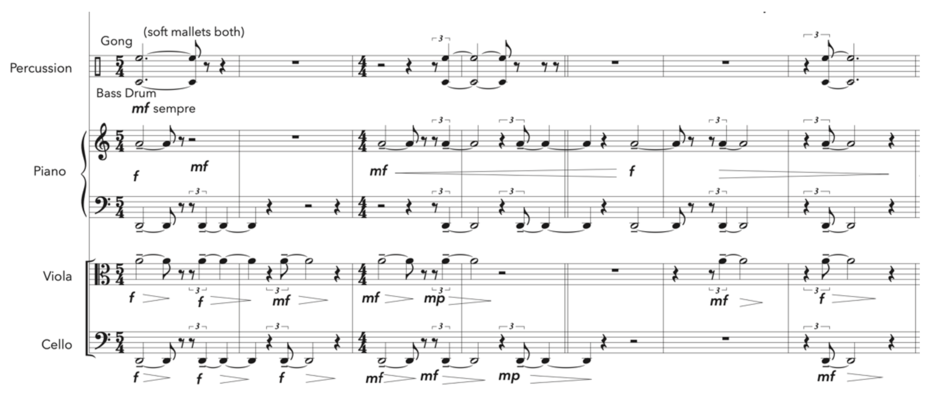The overarching idea in the third scene of The Flowering Desert is Pantele’s development of a magnetic field that would protect the planet from the star’s radiation. The process that would make this possible in the script is tidal heating. The gravitational pull of the star and its neighbouring planets in the planet’s orbit, and how the dissipation of this energy affects the inner core of the planet, can create a magnetic field that protects it from the stellar winds. This is the case, for example, of Mercury and the Sun in our solar system. Research shows that tidal heating happens in the TRAPPIST-1 system planets (Barr et al., 2018; Dobos, 2019). This idea of tidal heating is translated musically in the scene in the form of pulsation, showcasing the pull and release effect that the planet’s inside experiences.
Pulsation is featured in this scene as two different processes. The first consists of a musical motif that repeats with cyclical changes in orchestration and volume (Figure 25).
The second process consists of applying the idea of pull and release structurally with tempo changes. This second process starts with the appearance of the Mother Star to confront Pantele (bar 109). It is divided into two subsections: the "Tidal heating trio", and the "Proton bombardment".
- Tidal heating trio - When the star sings, the tempo is pulled back. Then, it is released when Xoe or Pantele sing. As if it was a pendulum, the span of the tempo changes dissipate over time. This is the tempo change sequence:
- Proton bombardment – Towards the end of the scene, to mark the change of Pantele (who develops a magnetic field that protects her from the radiation of the star[66]), the process changes. It is Pantele who pulls back the tempo, being the character in control and taming the star. The pull of Pantele is released by the comet Xoe (who is still a mentor figure for Pantele). This is the tempo change sequence:



